

Fully autonomous parcel delivery robots take traffic congestion, lack of parking, and delivery failure out of the last mile equation.
The last mile in the logistics chain is often inefficient and complicated due to traffic, a lack of parking, and high delivery failure rates. Enter Malaysian start-up HelloWorld Robotics, with its mission to use robots for making last-mile delivery smarter, cheaper, and faster.
HelloWorld was founded by 27-year old electrical engineer Kennedy Wai. Despite having just celebrated the company’s first birthday, Wai is already in preliminary talks with Malaysian incubator Futurise to test the first prototypes in Cyberjaya in Selangor this year. HelloWorld’s robots are fully-autonomous, delivering packages to safety boxes that are designed and provided for by the company.
The boom in e-commerce means big business for global parcel delivery. The worldwide market for parcel delivery is estimated at US$79 billion, including pick-up, line-haul, and sorting. The last mile accounts for a substantial portion, up to 50% of the value, which makes it a key area of investment and innovation. It’s also the part of the supply chain most fraught with problems. Distribution in urban areas is hampered by congestion, inefficient collection processes, lack of parking, unconsolidated deliveries, and delivery failure when the recipient is not home. Additional complications in southeast Asia include poor road access or lack of formal or identifiable home addresses.
“For now, a lot of other companies are using robots for delivery but they haven’t provided a fully complete delivery service for their customers,” says Wai. “And that’s one of our advantages.” Autonomous robots, he says, can prove highly useful in low density populations where labour costs are high. In the future, drones will also be an effective solution in circumstances where infrastructure and roads are poor. They still face barriers in urban environments due to their weight restrictions and battery life, as well as regulation.
Wai says HelloWorld’s robots, which can deliver within a three to four-kilometre radius at a speed of about 3km per hour, are ideal for gated communities such as school campuses or industrial parks. By delivering to the purpose-made safety boxes, the customer can conveniently collect items in their own time. Designed to be environmentally friendly, HelloWorld’s robots are also combatting air pollution and traffic congestion, which are among the negative effects of e-commerce.
There is a bright future for the use of automation in logistics, say the authors of the McKinsey report Fast forwarding last-mile delivery–implications for the ecosystem, especially for its potential to increase efficiency: “Autonomous delivery vehicles are and will be the dominant technology in this regard, and they have the power to reshuffle the entire industry.”
Digital transformation, or Dx, is a powerful business enabler that is impacting all industries, in all shapes and sizes, and is constantly pushing business leaders to fundamentally change their technology ecosystems and create innovative business models that adapt to changing business needs.
One of the key aspect that plays an important role in Dx is the integration of security, as it is a crucial factor in inspiring the consumer confidence that will result in commercial success for the new emerging technologies.
So, how can businesses enable Dx journey in a secure and compliant manner, knowing that the world of cyber security is always changing, with new threats and countermeasures emerging on a daily basis?
The cyber security global market is growing rapidly and is considered a crucial investment in today’s market.
The worldwide spend on information security products and services in 2017 was $101.544 billion, set to increase to $114 billion by the end of this year, followed by $124 billion by 2019, representing an almost 20% increase in the space of 2 years.
The major forces driving the cyber security market growth are strict data protection directives and rising cyber terrorism, in which professional cybercriminals will cost businesses over $2 trillion by 2019.
“BFSI will continue to drive the highest growth and market share for the overall security products and services market with 16.6% CAGR between the years 2016 to 2021.”
In Malaysia, The Financial Services segment (BFSI) is also one of the most mature markets in terms of cyber security regulations and fast adoption of advanced technology. BFSI will continue to drive the highest growth and market share for the overall security products and services market with 16.6% CAGR between the years 2016 to 2021.
And while BFSI is the largest vertical in the managed security services market, robust growth in Manufacturing and Public Sector will become next largest industries by 2021 with 16.8% and 14.9% CAGR respectively due to an increased adoption of cyber security solutions in those verticals.
For the past decade, ensuring the security of data and infrastructure has become one of the most pressing concerns among businesses. In today’s hyper-connected world the need to be equipped with the right security solutions is even more crucial, mainly due the difficulties and complexity in managing the IT environment and protecting it against threats.
Organisations with the aim to drive their business through data is considered vulnerable and has a higher risk in exposing themselves to cyberattacks, data breaches and/or leakages - with the potential of risking themselves to any issues related to information security management.
Organisations across the globe that recognise the need in getting the right security policy and practise as part of their critical success factor for large IT transformation projects, believes that it is essential in enhancing customer experience.
Cyber threats are growing in volume and the nature of the threats is continuously evolving. With organisations actively adopting cloud- based delivery models and committing to digital transformation, the traditional cyber security models become unsustainable and obsolete.
To ensure seamless protection over time, it is vital for organisations to adopt the next generation of cyber security model to protect their data, infrastructure and reputation. With a comprehensive set of security solutions, not only are they able to enhance their customer experience, organisations can also unlock new business potential through security innovation by creating new business opportunities, as well as deliver new products and services that are well matched for the current market.
Starting with the end in mind, in embracing, supporting and educating businesses on the importance and implementation of security as a crucial part of digital transformation, TM One has recently organised its inaugural LEAP Summit 2018 conference with the theme “Transformation Through Intelligence. Are You Ready?”. The summit was aimed at providing a platform for the Enterprises and Public Sector to share their dynamic thoughts and experiences during their transformation journey. During this full day summit, Vito Di Bari, the ‘New European Guru of Innovation’ and Ajay Sunder, Frost and Sullivan ICT Vice President gave a sneak peek on the possibilities on how we can gear up further for the digital evolution leap in the next 3 to 5 years, and possibilities of what may happen in next 7 years to come.
The delegates also gained insights on how innovation in digitisation, analytics, artificial intelligence (AI) and automation can create vast opportunities for businesses and industry makers, and perk up the digital economy as the country takes the leap into becoming a digital nation, in which security plays a vital role in ensuring the realisation of our digital journey.
Gartner predicted that 60% of digital businesses will suffer major service failures by 2020 due to the inability of security teams to manage digital risk.
The top three globally-identified key challenges with regards to security operations are the ability to timely detect and effectively respond to security incidents, the impact of new technologies such as cloud, data centre, mobile and Software-Defined Networking (SDN), and internal awareness and training to upskill employees.
And it is a known fact that for organisations who put security as an a erthought, will more likely face higher risk in having their systems, especially their data base, being hacked by unknown individuals with the intention of either to steal or to just make a statement.
How each organisation is being impacted by a security breach is dependent on the timing, duration and which industry it belongs to – with the most common business impacts crossing all industries and ranging from loss of revenue and productivity, reputational damage, corrupted business data, loss of intellectual property, level of trust declines, psychological stress to employees, as well as external fines and litigation.
The attacks are closer than you think
Back in 2017, the New Straits Times paper
OVERVIEW
TM One has a goal of enabling both private and public sector organisations to fully realise their digital opportunities. In line with its mother brand, Telekom Malaysia’s mantra of “Life Made Easier,” TM One illustrates the commitment to offering the best converged solutions and services to customers.
TM One is developing various innovative products and solutions on top of the core infrastructure as a means of accelerating convergence, with the goal of becoming the number one digital enabler for customers. The key lever to accomplish this goal is verticalisation throughout 2018-2020.
The first step in the verticalisation approach was the completion of the Experience Centre at Menara TM One, with this highly anticipated Experience Centre designed with state-of-the-art technologies to showcase a number of vertical solutions for customers. At 20,000 square feet, the Centre aims to help customers envision the future of their digital business transformation through inspirational, visionary and co-creational experiences. Customers can see new experiences and better understand the value that TM One brings as a trusted partner for both enterprises and public agencies throughout Malaysia.
The 20,000 square foot Uptime Institute Tier III certified data centre is built in Nusajaya Tech Park, Johor, the flagship technology park in Iskandar Malaysia. The Iskandar Puteri Data Centre (IPDC) is one of two major facilities planned by TM One to meet anticipated growth in data and hosting requirements. The carrier-neutral data centre will also house TM One’s international gateway that serves as a regional hub in providing services like end-to-end managed ICT services, BPO services, cloud services via digital marketplace and high-speed connectivity.
The IPDC, in tandem with the Klang Valley core data centre currently under construction and slated for a November, 2018 completion, is part of the company’s “twin core” strategy. Located 320 km apart, the two facilities will be linked with a fast fibre optic link to important business continuity and disaster recovery capabilities.
Both data centres will certified by Uptime Institute; IPDC is currently one of two such facilities to be awarded the Tier III Certification of Constructed Facility in Malaysia.
OPPORTUNITY
TM One began the organisation’s journey with Uptime Institute by achieving the Tier Certification of Design Documents, which is intended as a provisional verification ahead of the facility construction. The Tier III Certification of Constructed Facility award ensures that TM One’s world-class Data Centre facility is constructed to the same specifications as those laid out in the original facility design documents. With many of TM One’s customers in highly regulated sectors, the Tier Certification award assures customers that the facility is built to its intended performance, availability and reliability. The certification award also shows TM One customers that the data centre provides further confidence to our customers as it meets if not exceeds industry standards and affirms that TM One is the enabler for the digitisation journey for the industry.
Customer targets for the IPDC include:
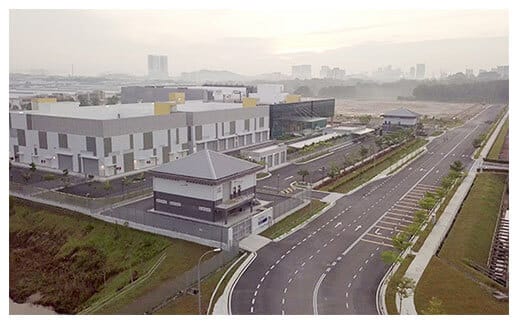
“We are committed to provide our customers with state-of-the-art business solutions, coupled with the best customer support service towards enhancing their business productivity and market competitiveness, in line with our promise of `Life and Business Made Easier,’ hence working with Uptime Institute to realise the aspiration was a very progressive journey.”
SOLUTION
TM One has the largest Tier III certified data centre in Malaysia, which is a testament to the continued efforts to facilitate the nation’s aspiration of becoming a world-class digital and smart services hub in the region. The TM One data centre meets the industry’s top standards and thus ensures high availability, reliability and advanced security and connectivity. TM One is committed to providing customers with state-of-the-art business solutions, coupled with the best customer support service towards enhancing their business productivity and market competitiveness.
The certification processes undertaken by the TM One team provided insights into the best practises applicable to the TM One data centre design and build approach. This allows further competitive differentiation and assurance of the high quality of the data centre.
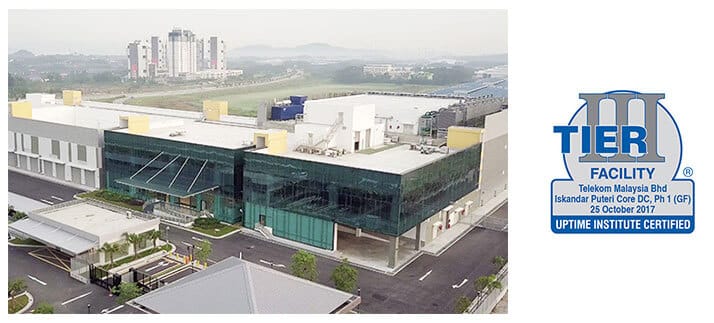
The administration process around building a strong digital infrastructure is usually seen as an expensive endeavor. The involvement of multiple vendors create unnecessary challenge of delays in service deliveries and increased costs, causing businesses to lose their competitive edge in the global market. TM ONE—the enterprise and public sector business solutions arm of Telekom Malaysia Berhad (TM)—eliminates these complexities by taking a holistic approach in delivering a complete digital enabler solution for the enterprise as well as public-sector clients, with connectivity and security at its core. “The TM ONE umbrella comprises several product pillars that ensure more efficient, competitive, and a frictionless digital enablement for every industry,” says Nizam Arshad, the Chief Technology Officer (CTO) of TM ONE.
As the primary digital enabler, TM ONE’s first pillar of digital business solutions information and communication technology (ICT) services, delivering the best-in-class total experience. The company constantly seeks strategic alliances and builds its own strong ecosystem of local and global partners to create innovative end-to-end digital solutions and managed services to help enterprises and public-sector customers solve even the most complex digital transformation challenges. The second pillar in TM ONE’s solution is the BPO services, which include voice, live chat, as well as chatbots to help clients develop stronger relations with their customers. The company also offers the electronic form product, which can be used by call center agents to transform paper documents into electronic forms quickly, thereby saving organisational cost by storing documents using fewer servers and operating systems.
“TM ONE has partnered with a Robotic Process Automation (RPA) solution provider to offer a software robot that takes over human tasks and processes performed online,” adds Nizam. This robot can substitute routine and manual tasks in functional areas including human resource, administration, procurement and finance. The solution can be deployed on-premise and on TM ONE Cloud with easy payment options depending on the type of work to be performed. Running on TM ONE Cloud, it can be shared by multiple organisations to reduce operational costs even further.
TM ONE’s fourth product pillar is a comprehensive suite of Smart Services that utilise connectivity, data center, cloud, ICT services, and IoT to address the challenges in industries such as real estate. One of our highlight solution is the Smart Traffic Analytics & Recognition System (STARS), which can provide real-time traffic flow information from the data collected through cameras and exchanges. This information can then be analysed to identify faults in the traffic signal systems, enabling field engineers to be sent on time and thereby minimizing traffic disruption. This solution allows chief engineers to leverage laptops/mobile devices as a monitoring operation center (MOC) to program the sequence of the traffic lights—improving traffic flow and reducing the cost of operating and managing traffic lights.
To enable the digital transformation of any business, TM ONE has built the Iskandar Puteri Data Centre (IPDC) as a purpose-built carrier-neutral data center. IPDC stands as the first commercial data center to be awarded the Tier III Certification of Constructed Facility in Malaysia by Uptime Institute. This service enables institutions to leverage the bundled data center, cloud, BPO, and DR services, all at the right level of pricing.
TM ONE is the business solution arm of Telekom Malaysia Berhad. Telekom Malaysia Berhad has established its footprint in Washington D.C., San Francisco, Singapore, Australia, China, and London in the UK. The company also has a significant presence in Jakarta, Indonesia where they are offering contact center services that are manned by over 4,000 agents. “Our future investments will be around ICT and smart services, which will be offered through our existing cloud infrastructure,” concludes Nizam.
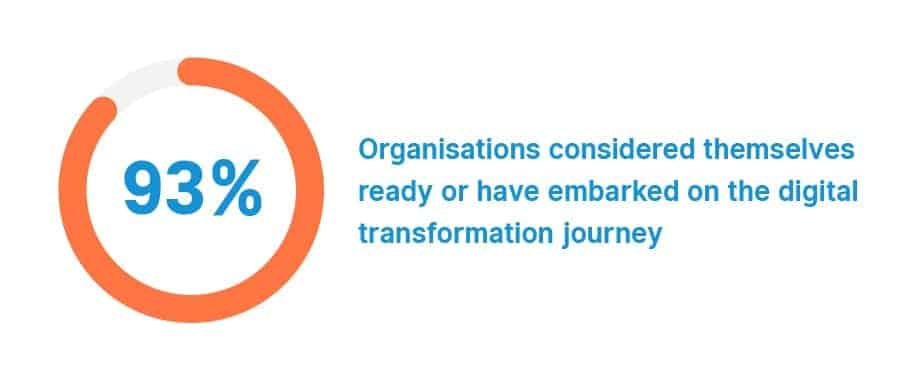
Digital transformation is one of the key strategic goals for enterprises and the public sector across the region. An Asia Pacific end-user survey by Frost & Sullivan highlighted that 93% of the organisations surveyed considered themselves ready or have embarked on the digital transformation journey. Further result from the survey shows data analytics and Artificial Intelligence (AI) were rated as critical investments over 2017 – 2023 to the success of their digital transformation.
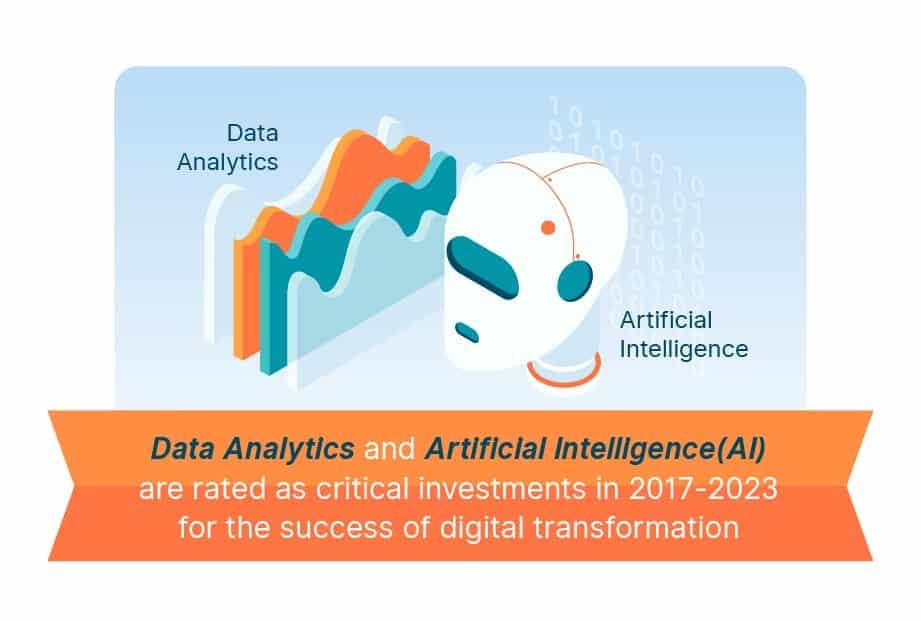
The drivers for these investments however vary significantly depending on the size and digital maturity of these organisations. To ensure desired business outcomes, enterprises are continuously exploring new technologies and investing in critical enablers such as Data Analytics and AI - as analytics itself has undergone a paradigm shift over the recent years - from data warehousing and mining to providing predictive business intelligence.
As organisations adjust to the rapidly changing digital lifestyle of consumers worldwide, they are discovering the importance of understanding and envisaging the impact of information generated from digital sources. Sophisticated analytic capabilities and intuitive visualisations are driving a profound change in how marketing, advertising, communications, supply chains, value chains, processes, transactions and deals are going to be accomplished.
Amongst other verticals, leading BFSI and Energy companies are building their digital transformation strategies as the foundation for sustained growth. While, the BFSI sector has leveraged digital extensively over the years, there is continued focus on adopting technologies that can enable improved cost of operations, streamline processes and create better customer experience. Big Data and AI tools are being deployed extensively by banks in the region to ensure greater compliance as well as gain deeper customer insights to identify cross-sell opportunities. Besides, emerging technologies like blockchain, continue to transform the industry, in a way that may completely disrupt traditional banking in years to come.
Digital has also emerged as the key enabler in Energy sector, driven by the need to reduce costs, make faster and better decisions, and to increase operational productivity. Besides operational applications and digital asset management, Internet of Things (IoT) driven applications are creating a data-first approach to managing existing assets, supply chains, or customer relationships. Integrated deployment strategy with analytics is becoming the key for Energy companies to unlock value and potential.
The constant advancement of hardware and breakthrough Machine Learning (ML) algorithms has also unleashed a new wave of exponential progress that is set to affect every industry. True success in AI depends on access and timeliness of data, drawing insights and utility from the Internet of Things and Big Data paradigms. While all industries stand to benefit from this, the adoption is at different levels.
Telekom Malaysia’s (TM) end-to-end solutions and services capabilities create a compelling value proposition for enterprises and is also demonstrating a continued focus towards creating value for supporting enterprises in their transformation journey. TM’s offerings across software applications, network services, Tier-III Data Centre, Cloud services, high-performance computing infrastructure and managed services position it well to partner with enterprises in their digital journey.
Given TM’s strong focus towards offering digital solutions for both BFSI and Energy Industries, TM led a strategic initiative of inviting UK based AI companies (in partnership with British High Commission) in October 2018. Close and intensive engagements with these AI companies helped explore opportunities for collaboration and identify means to create greater value for BFSI and Energy organisations in the region.
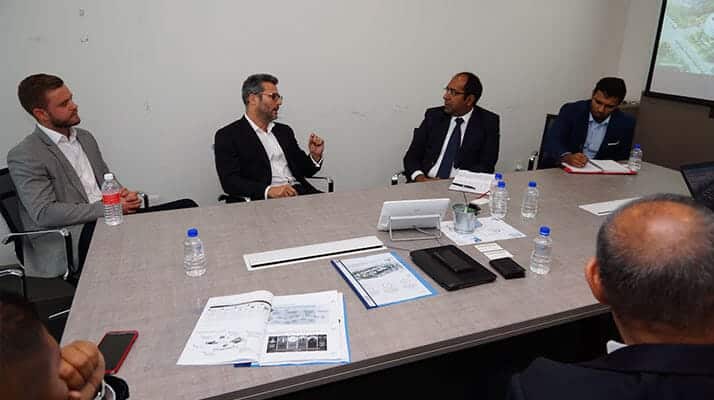
The initial discussion started with an introduction on TM solutions and capabilities, as well as TM’s strong understanding of the Malaysian Market. Led by Wan Ahmad Kamal, Executive Vice President, Enterprise Business, TM One, the conversation deep-dived into how the nation’s Convergence Champion and No. 1 Converged Communications Services Provider, has transformed itself to fully support both BFSI and Energy industry’s transformation journey and continuously be relevant in the digital market.
He added that by having a deeper understanding of verticals, TM is better equipped at delivering solutions and services packed with high security standards catered to the need of the BFSI and Energy industries. TM, through its business solutions arm, TM One, assures securities aspects of both industries via its Twin Core Data Centre’s world class security capabilities.
TM One's Twin Core Data centre, comprises two-state-of-the-art Data Centres, named as Iskandar Puteri Data Centre (IPDC) that is located at Iskandar Puteri in Johor and Klang Valley Data Centre in Cyberjaya, Klang Valley. IPDC is in compliance with various industry and security certification standards, including undergoing threat, vulnerability and risk assessment (TVRA), ISO27001, as well as PCI DSS1. While KVDC, will be undergoing a few rounds of certification processes to complement its sister twin, after 3 months of operation once construction completes in early 2019.
Wan Ahmad Kamal added that with the Twin Core infrastructure in place, scalability, flexibility and agility will no longer be an issue. As speed to market becomes critical for both of these industries, the need to scale with technology that is constantly agile, capabilities and competencies that are always available and on top of an infrastructure that is robust through changing times, is crucial to maintain a business’ relevancy and competitiveness in the market.
He also commented that TM One has been involved in various infrastructure investments in order to support both of these industries. Among the solutions provided are TM One’s Multi-Cloud Services, Twin Core DC Disaster Recovery (DR) services and TM’s very own TM One ID Hub, or widely known as eKnowYourCustomer (eKYC) and Managed Security.
Digital transformation entails the integration of digital technology into all areas of business, and these integrations would then drive the fundamental changes of how a business operates and deliver value to its customers.
Driving the discussion further, the AI vendors explained how their technology capabilities enable businesses to enhance their customer experience, optimise processes and operations as well as improve security in a highly data intensive environment. The discussion focused on how businesses are taking precautionary measures in their own digital transformation journey.
Everyone generally agreed that by going digital, the banking and insurance companies would require clear articulated strategy, funding, talent, agile ways of working and an internal culture that is willing to take risks in order to transform their businesses. As for the Energy industry, there is a need to optimise operational performance that would significantly reduce costs and minimise risks throughout the transformation process.
It is clear that to drive transformation; an organisation would require a thorough enhancement to the business’ organisational efficiency and increase the speed of delivery to its customers. Opinsta, one of the UK companies, showcased their capabilities in countering operational challenges. The company specialises in amplifying an organisation’s operational potential, in essence, by putting routine business processes into an automated and digitised mode.
Their capabilities include digitising and innovating customer-related business operations, with a multifunctional app that acts as a bridge to employees of all levels. It serves as a tool for efficient maintenance reporting and to minimise manual processes altogether.
As experts in rapid build, development and support in amplifying operational performance, they have to-date built nine (9) separate solutions that caters to specific business requirements.
It was clear that digital has changed the way businesses operate over the years. Given its impact it has on businesses, the risk of human error would bound to happen along the way. Jazz Networks, another UK company involved in the discussion, explained that businesses need to mitigate human error from the source.
They continued to explain that their technology was created to address complexities of human behaviour and the countless times humans have indirectly bypassed security built to protect them. Their platform is equipped with an advanced learning systems that collects and analyses human behavioural data of users on the network, and detect flagged activities that is considered suspicious.
This platform gives the administrator a complete transparent view of the network – with a user interface that analyses the collected data to ensure end-to-end visibility for each activity happening on the network.
Jazz Networks takes accuracy and transparency seriously. Their platform enables users to view real-time data that will help them make benefitting business decisions each step of the way. And to top it off, their platform’s capability to scale together with user’s business needs, managed as a single entity through intelligent segmentation that dynamically split the network into logical partitions, enable any security policy and machine learning insights to apply to all end users’ computers.
The discussion was effective as it leveraged on TM’s strong understanding of the Malaysian market and deep domain/ industry expertise. At the same time, the AI vendors brought forth technologies which would enhance customer experience, optimise business processes and operations as well as improve security in a highly data intensive environment.
In summary, all parties cohesively agreed that:
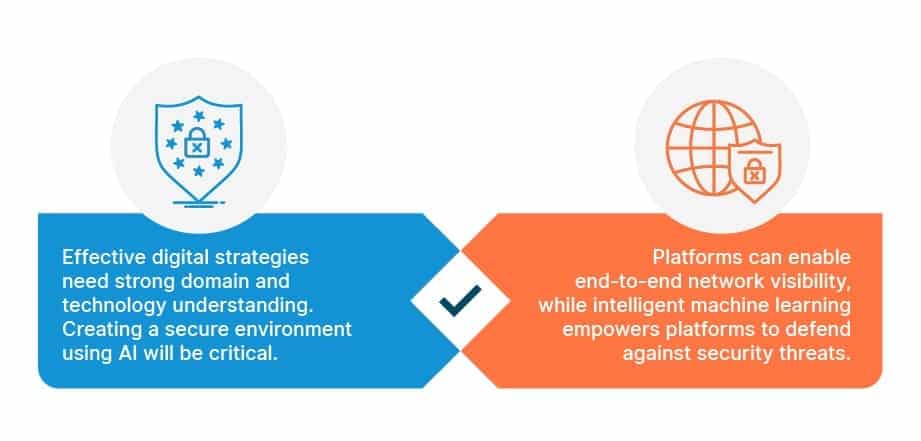
Digital has been driving the country’s digital economy for the last decade, and will continue on for the next. It is imperative for businesses to be on the right digital track, with the right technology, at the right time, or they will risk being irrelevant to the market. The need to be equipped with scalable capabilities, coupled with competent resource is also important for any business embarking on their digital transformation journey.
Frost & Sullivan, and TM One believe that engagements between leading service providers and emerging global technology vendors play a critical role towards accelerating development of innovative solutions and creating an ecosystem enabling sustained growth of organisations in the digital era.
Nishchal Khorana,
Director, Digital Transformation
Practice, APAC,
Frost & Sullivan
Technology is transforming every industry, and real estate is no exception. The world’s largest asset class, Savills Global Research valued global real estate at $228 trillion in 2017. Residential property accounts for about 75% of that and is growing at 5% per year. The picture across Southeast Asia is more mixed, with Vietnam and Indonesia flat or in a downcycle, Singapore and Malaysia growing modestly, and Thailand the most buoyant, according to data from the IMF.
Technology is playing a key role across both commercial and residential property sectors, from property listing portals, to big data and analytics, blockchain, cloud platforms, and virtual reality, there are start-ups solving industry problems from all angles. JLL research found that, in 2017, Asia-Pacific accounted for 65% of global proptech financing deals, which highlights the expectations that investors have for proptech to take off around the region.
Part of this is due to the rapid urbanisation happening in many Asian countries. Globally, 55% of the world’s population lives in cities, a figure that the UN expects to rise to 68% by 2050. China and India alone account for 27% of this projected growth, pointing to a high level of internal migration and demand for urban real estate.
Despite being a relatively nascent industry, residential proptech has already gone through several evolutions from the early versions of online marketplaces and collated property listings. While not necessarily at the cutting edge of technology, the listing sites have been key to creating transparency.
Real estate technology is “creating an environment of trust,” says GeorgChmiel, chairman of Juwai.com, China’s largest international property portal, and ex-CEO of Malaysia’s property portal iProperty. “In the past, someone who wanted to purchase a property had to go to an agent and look what they had on offer but could never be sure if they had covered the whole market.’’
The second wave of the residential proptech evolution has been providing value-added services. To increase the attractiveness of their platforms, websites introduced data and analytics and virtual viewings. For example, Chmiel says that Juwai can advise developers targeting the Chinese market before they have started building. Juwai is the largest source of global properties for the Chinese audience, with over 2.8 million property listings representing about $1 trillion, according to its website.
“We can provide information about what Chinese buyers really value,’’ says Chmiel. ‘’What they want to see and whether they like two bedrooms or three. This is the power of data, where it becomes knowledge and it is really changing the industry.”
In the third evolution of proptech platforms, artificial intelligence and blockchain technology will play a role. Machine learning could accurately whittle down a property search according to a customer’s needs and their changing preferences. Meanwhile, chatbots could help automate real estate processes such as appointment bookings, saving time for real estate agents to concentrate on more value-added services.
In a real estate context, a blockchain – a digitised, distributed ledger that immutably records and shares information – offers a way to improve transparency. Smart contracts, essentially programs coded on a blockchain, would offer a means to do away with consuming face-to-face interactions with various parties such as lawyers or bankers.
Meanwhile, several companies are using blockchains as ways to ‘tokenise’ property; representing ownership of real-world assets in a digital form to reduce the cost of investment for investors and increase liquidity. However, regulators have cautioned that the anonymous nature of blockchains leaves certain platforms susceptible to potential abuse by criminals.
According to KPMG, in terms of digital innovation, real estate has typically lagged behind other industries, potentially due to the long-term nature of property investments and the apparent security they provide. Yet there are signs that this is changing and some of the most valuable US start-ups including WeWork and AirBNB are proptech companies that have already revolutionised the way we work and how we monetise our properties.
By applying technologies such as virtual reality and user-intuitive spatial planning tools for construction and development, or 3D printing to provide affordable homes, proptech could become a powerful force for good. “When people talk about disruption some people think it’s all about destroying something,’’ says Chmiel. ‘’But the ultimate source of disruption is really making things better in the real world and solving a real issue.’’
Insightful reads brought to you in partnership with MIT Technology Review Insights.